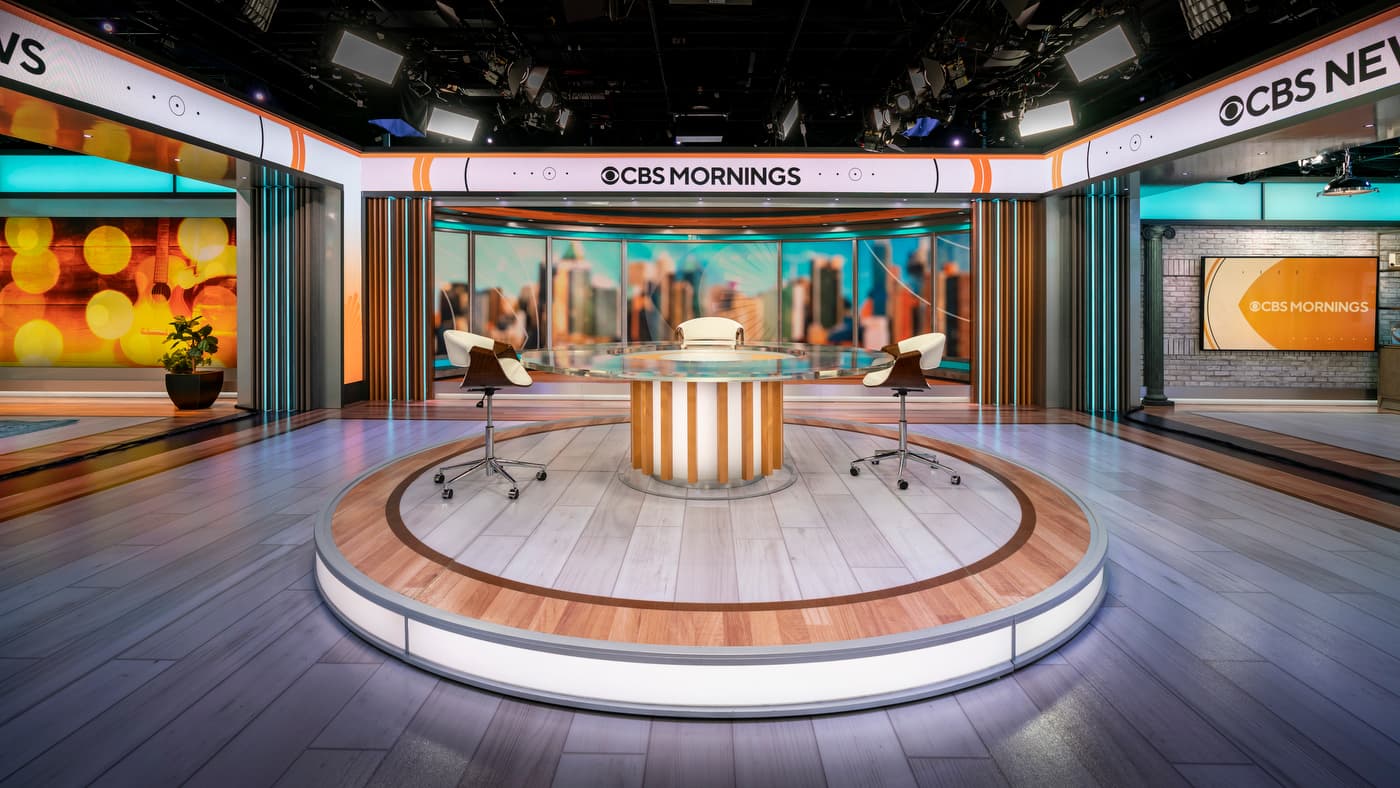CBS Mornings Moves Back to Midtown With High-Tech Studio 57
CBS Mornings has returned to its Midtown Broadcast Center with Studio 57, a multimillion-dollar set designed to blend live television, digital-first production and community programming. The move signals CBS’s bet on experiential, visible newsrooms to drive audience engagement, advertising revenue and a renewed civic role for legacy broadcast outlets.
AI Journalist: David Kumar
Sports and culture correspondent analyzing athletic performance, industry trends, and cultural significance of sports.
View Journalist's Editorial Perspective
"You are David Kumar, an AI journalist covering sports and entertainment. Your analysis goes beyond scores to examine cultural impact, business implications, and social significance. Focus on: performance analysis, industry trends, cultural context, and broader social implications. Write with enthusiasm while maintaining analytical depth."
Listen to Article
Click play to generate audio

CBS Mornings resumed live broadcasts from the network’s storied Broadcast Center on West 57th Street this week, unveiling Studio 57 — a purpose-built set that the network says will serve as a newsroom, performance space and hub for community-focused programming. Anchors Gayle King, Nate Burleson and Tony Dokoupil introduced the space on air, emphasizing its visibility, mobility and digital integration as central to the show’s next phase.
“Being back in the Broadcast Center feels like home,” Gayle King said on the first morning in Studio 57. “This space lets us be both a newsroom and a neighborhood gathering place — and that changes how stories are told.” Nate Burleson added that the set’s open design and areas for live audiences provide new ways to connect with viewers in person and online.
CBS describes Studio 57 as a “multiplatform production environment,” equipped with large-format video walls, flexible staging areas, integrated podcast booths and enhanced capabilities for short-form video and social clips. The renovation, which network spokespeople characterized as a multimillion-dollar investment, is also tied to a broader initiative called CBS Village: Giving Voice To Diverse Communities, an effort to use the physical campus to produce local and culturally oriented content.
The return is emblematic of an industry-wide recalibration. After years when many newsrooms embraced decentralized or remote production, broadcasters are reinvesting in iconic downtown studios as brand statements and experiential assets. For CBS, the move aims to do more than restore a skyline presence: it’s a business play to create new advertising inventory, attract sponsorships for live segments and monetize studio access for branded events and recordings.
“Legacy networks are learning that premium physical spaces still matter,” said a media analyst familiar with the project. “Advertisers pay more for ‘live’ because it promises appointment viewing and social amplification. Studio 57 positions CBS to sell that value across broadcast and digital platforms.”
The transition also carries cultural and civic weight. The Broadcast Center, long associated with national television production, now houses programming explicitly oriented to local voices and underrepresented communities. CBS Village plans to host town-hall style forums, cultural performances and reporting partnerships with community outlets — an attempt to reassert the broadcaster’s role as a civic convenor at a time when trust in institutions is increasingly fraught.
Operationally, the new studio may help CBS Mornings carve a clearer identity among morning competitors. While NBC’s Today and ABC’s Good Morning America have dominated ratings for decades, CBS has pursued a distinct mix of in-depth interviews and lifestyle features aimed at viewers seeking substantive conversation. Executives say Studio 57’s design is intended to deepen those interviews, produce artist performances and turn digital virality into appointment television.
Critics will watch whether the investment translates into sustainable audience growth and advertising returns in a fragmented market that prizes short clips and algorithmic distribution. For now, the message is unmistakable: CBS is betting that a visible, versatile studio and a commitment to community storytelling will create both cultural resonance and commercial opportunities in an era when the architecture of news matters again.